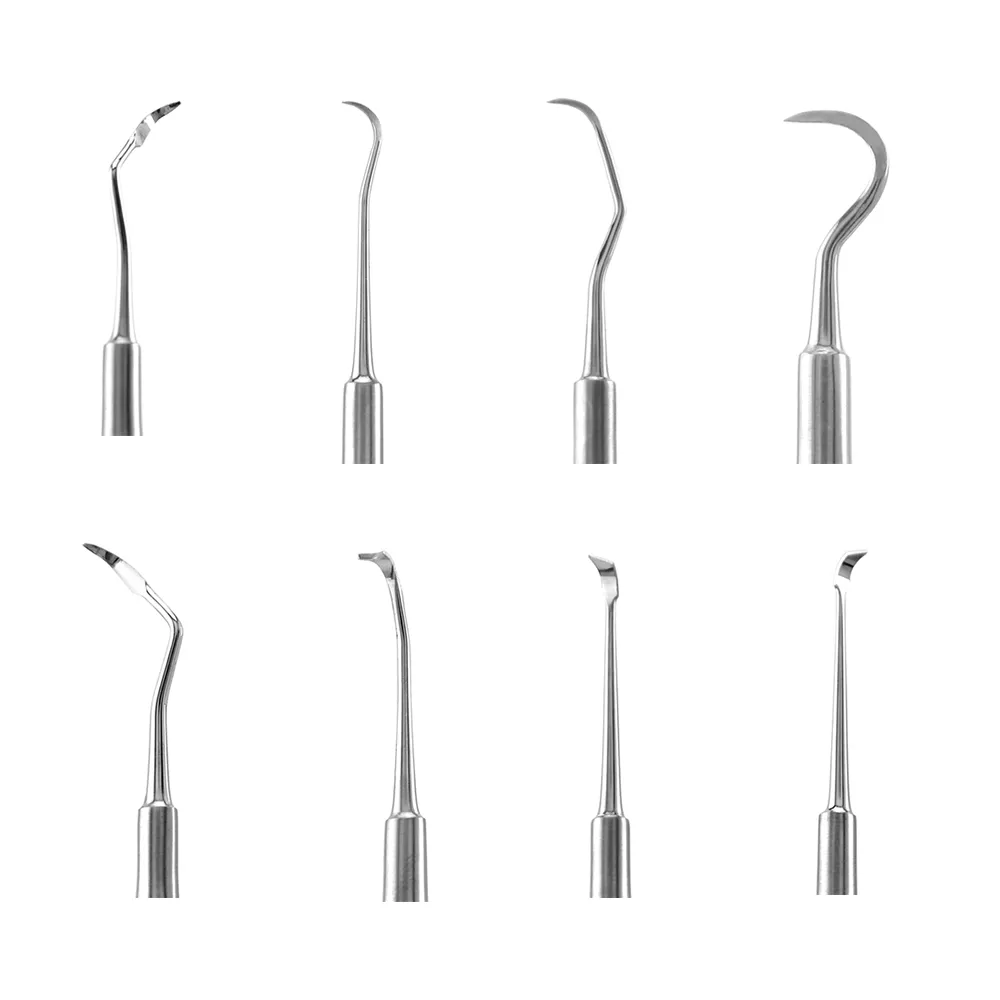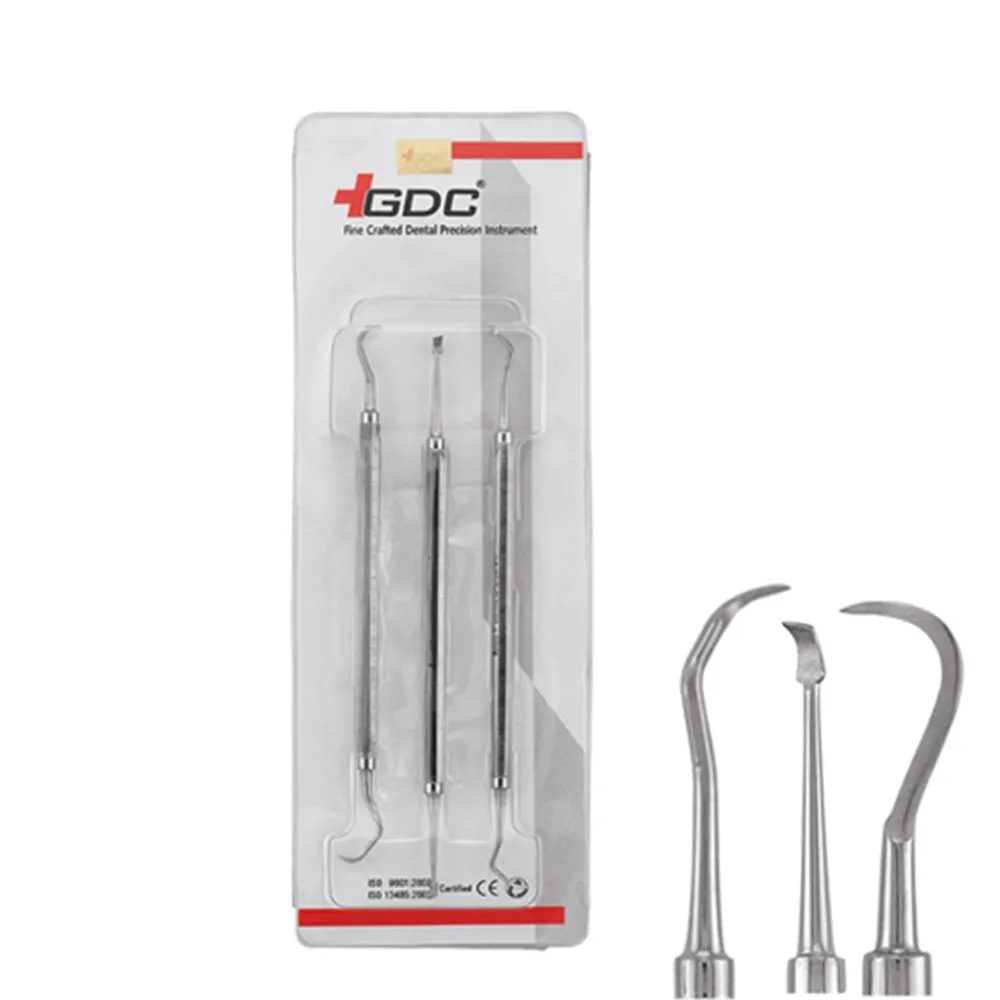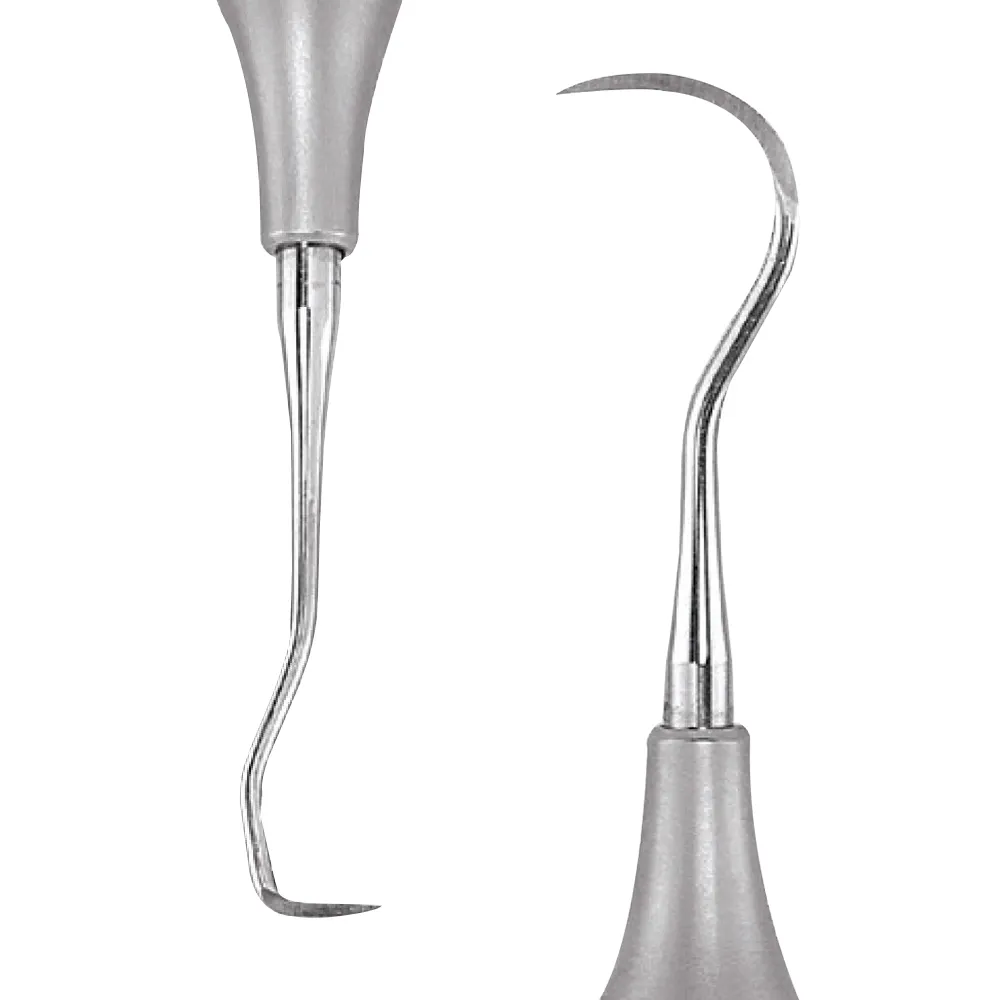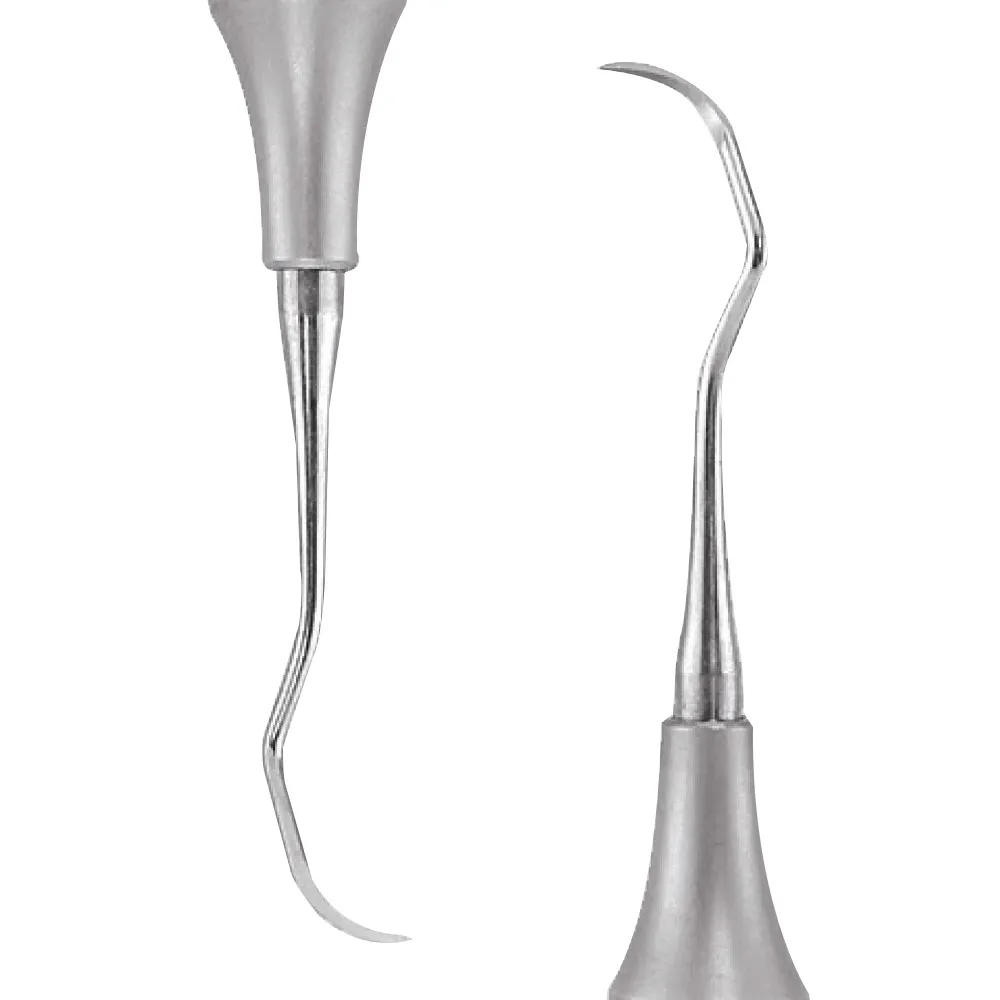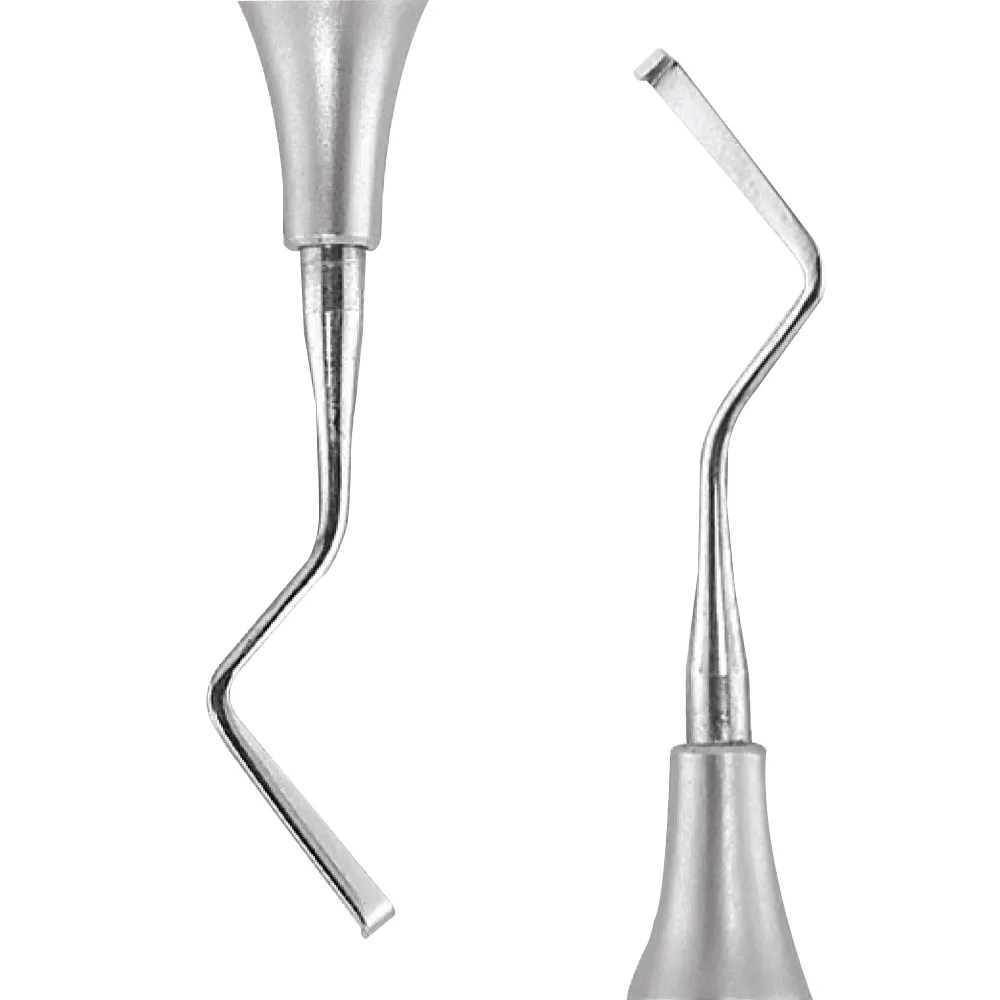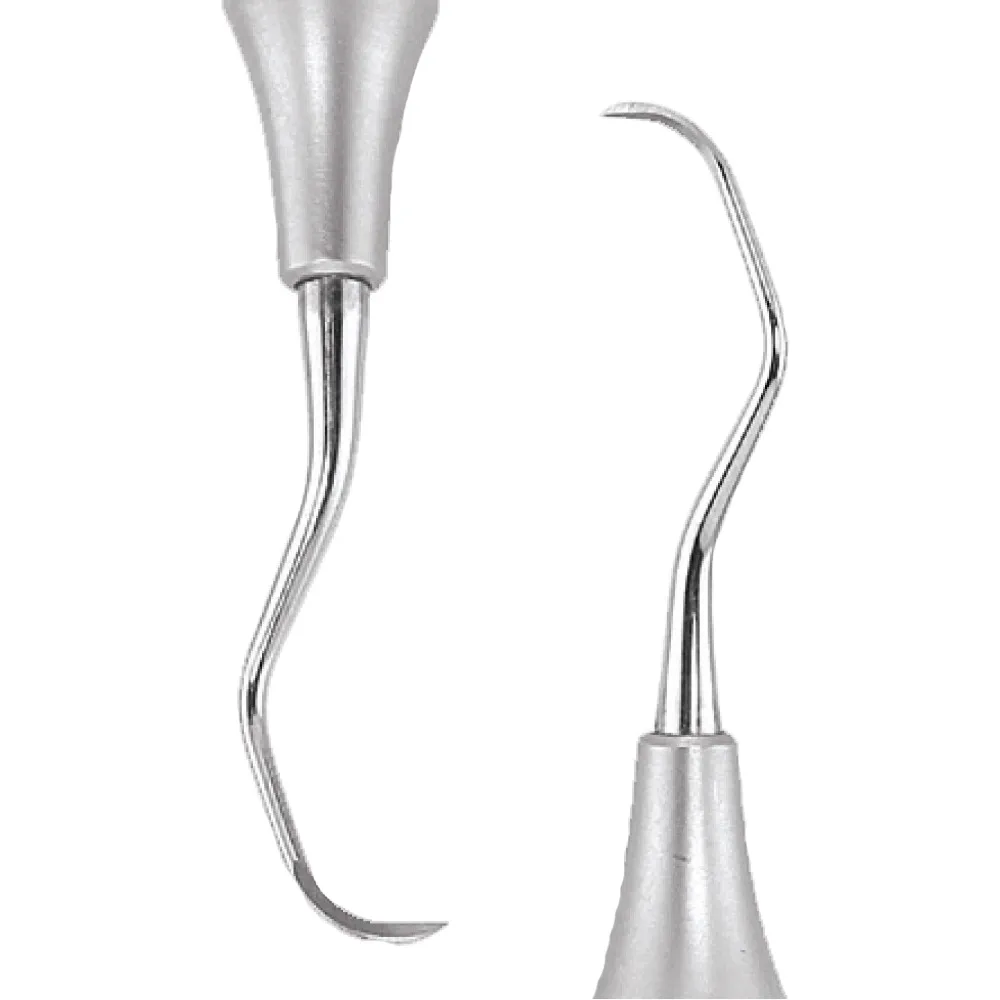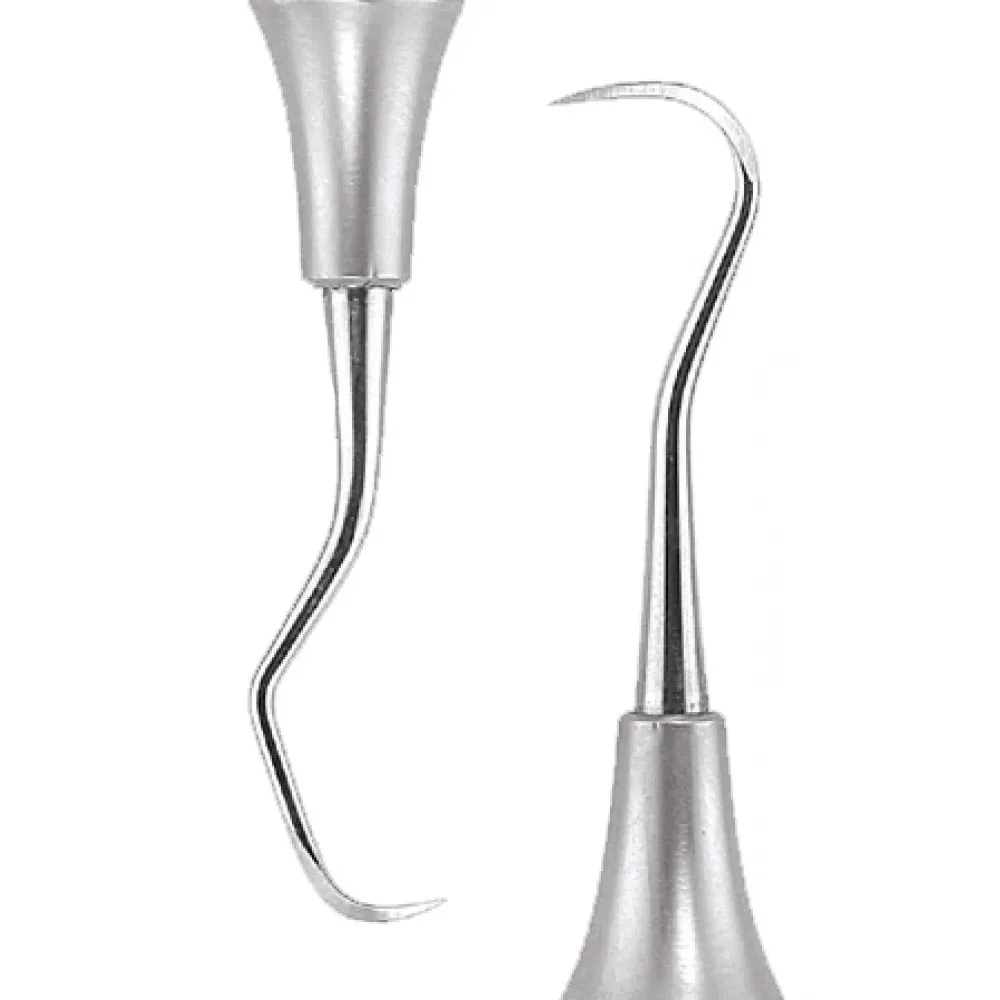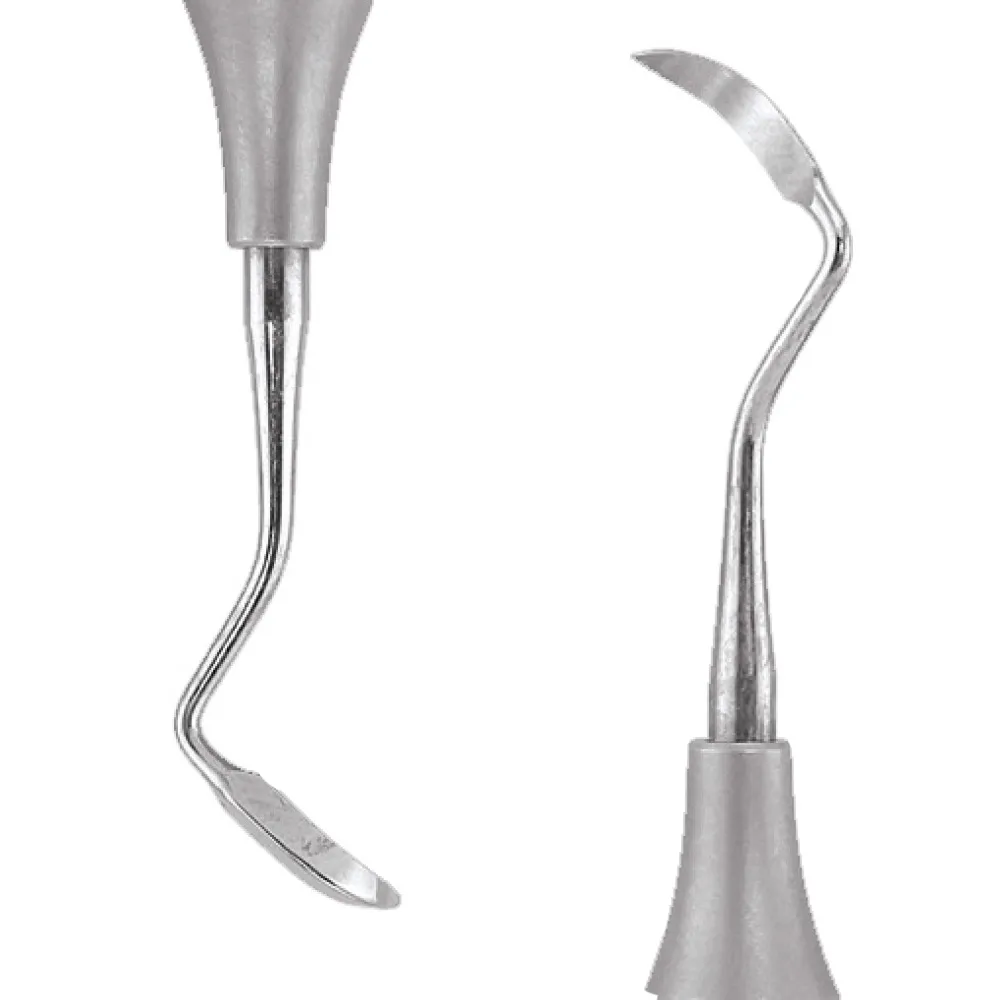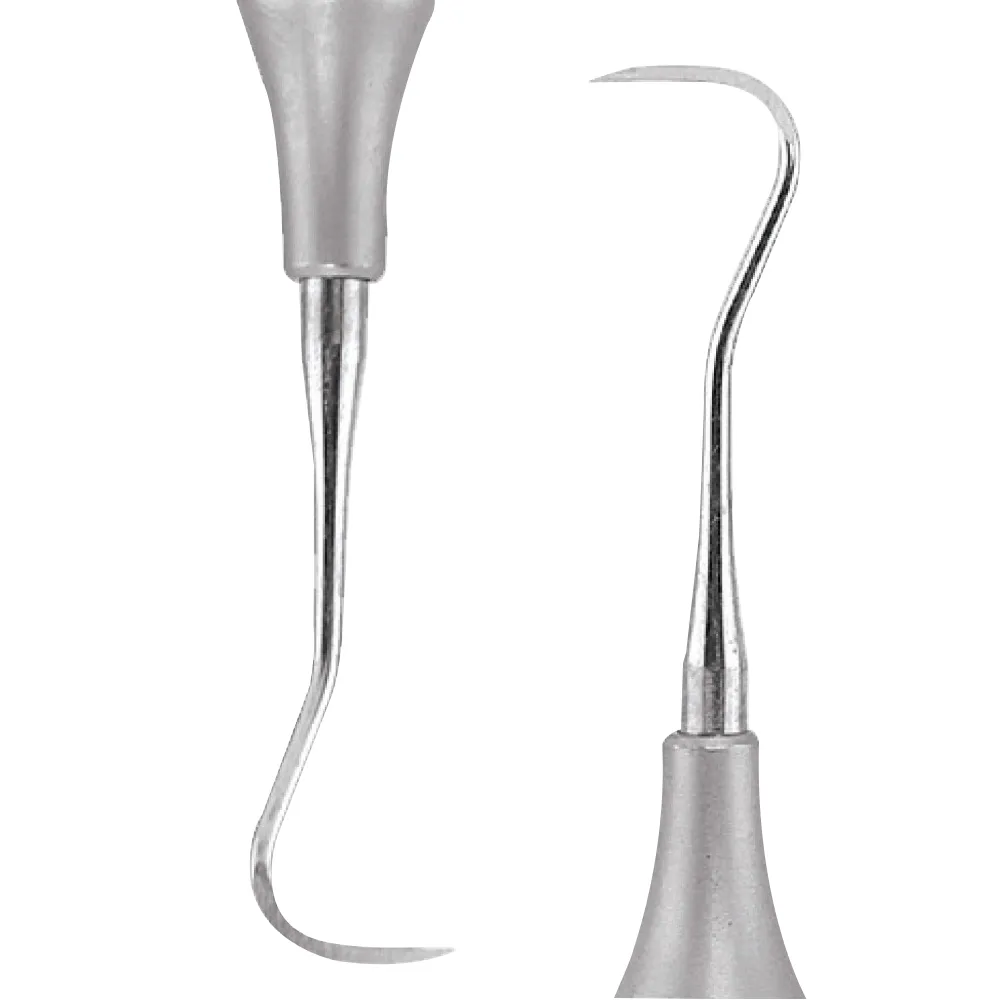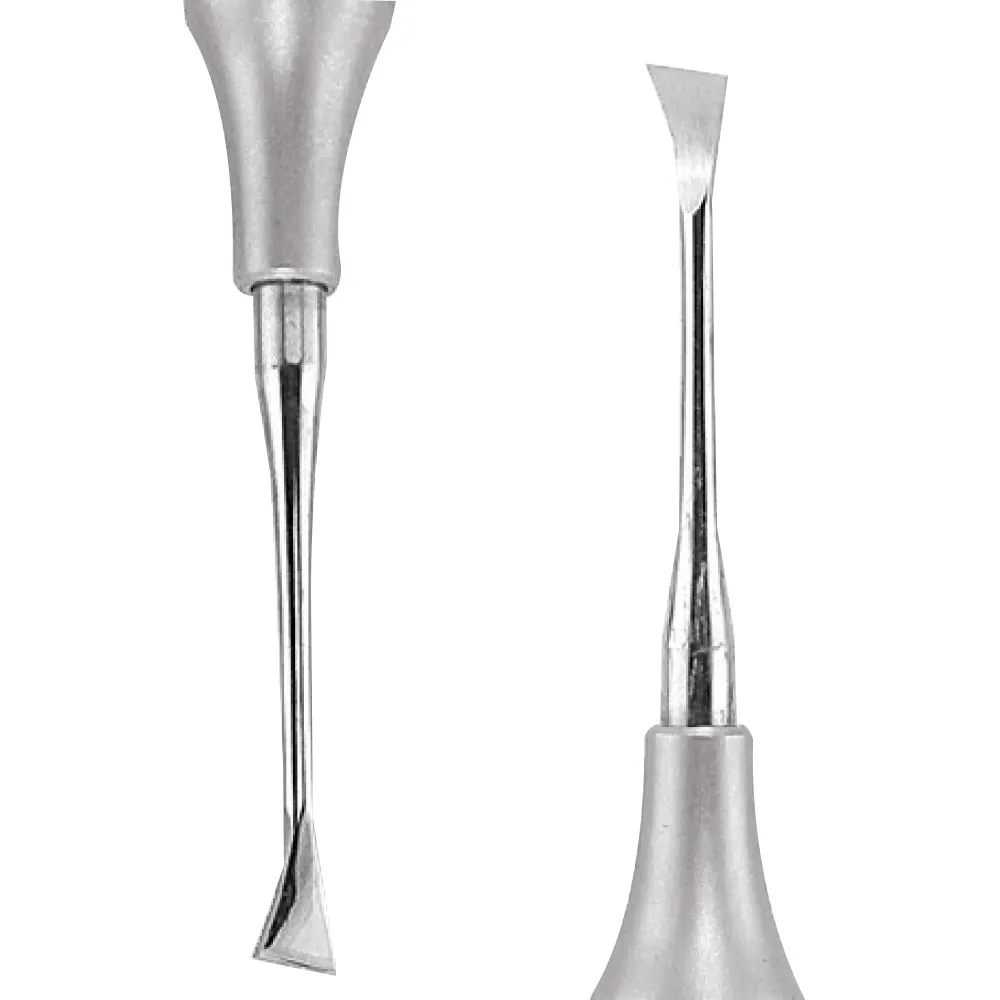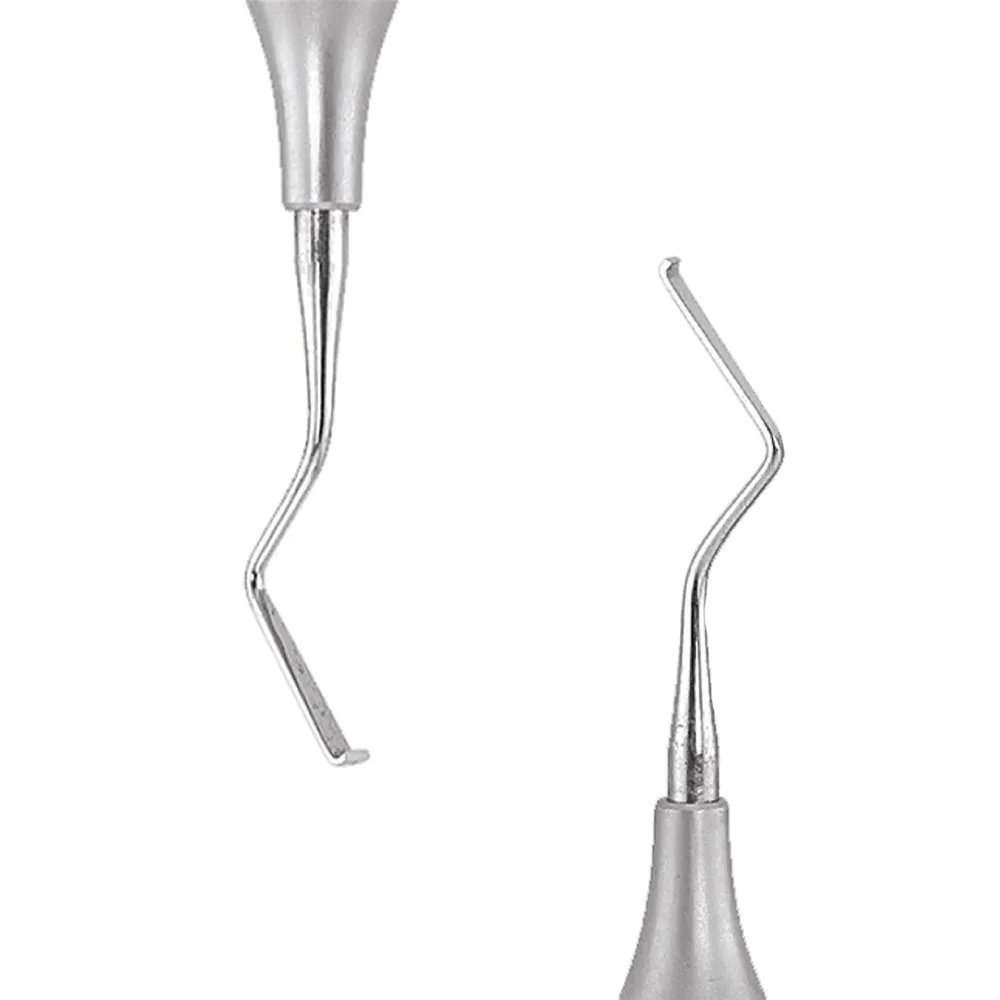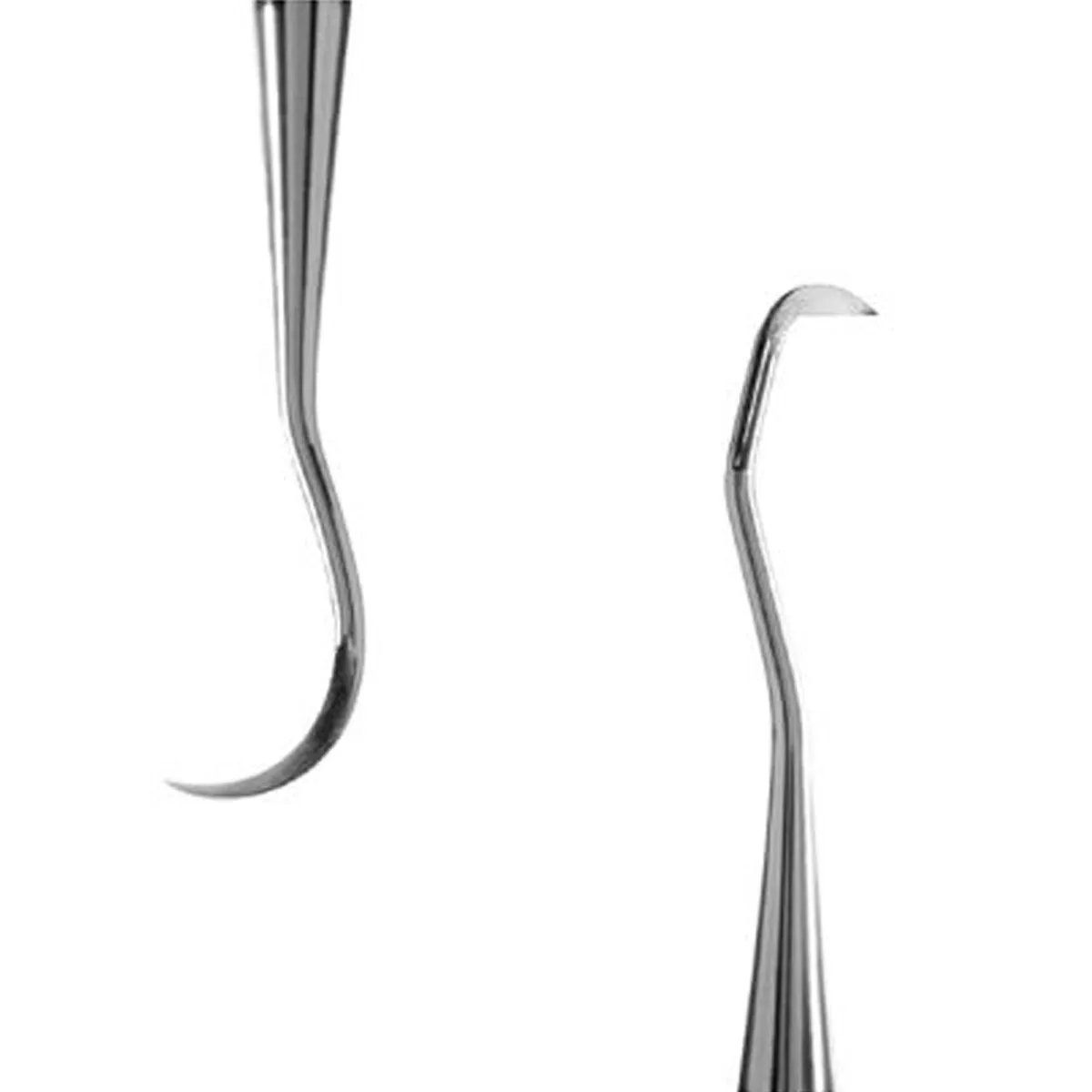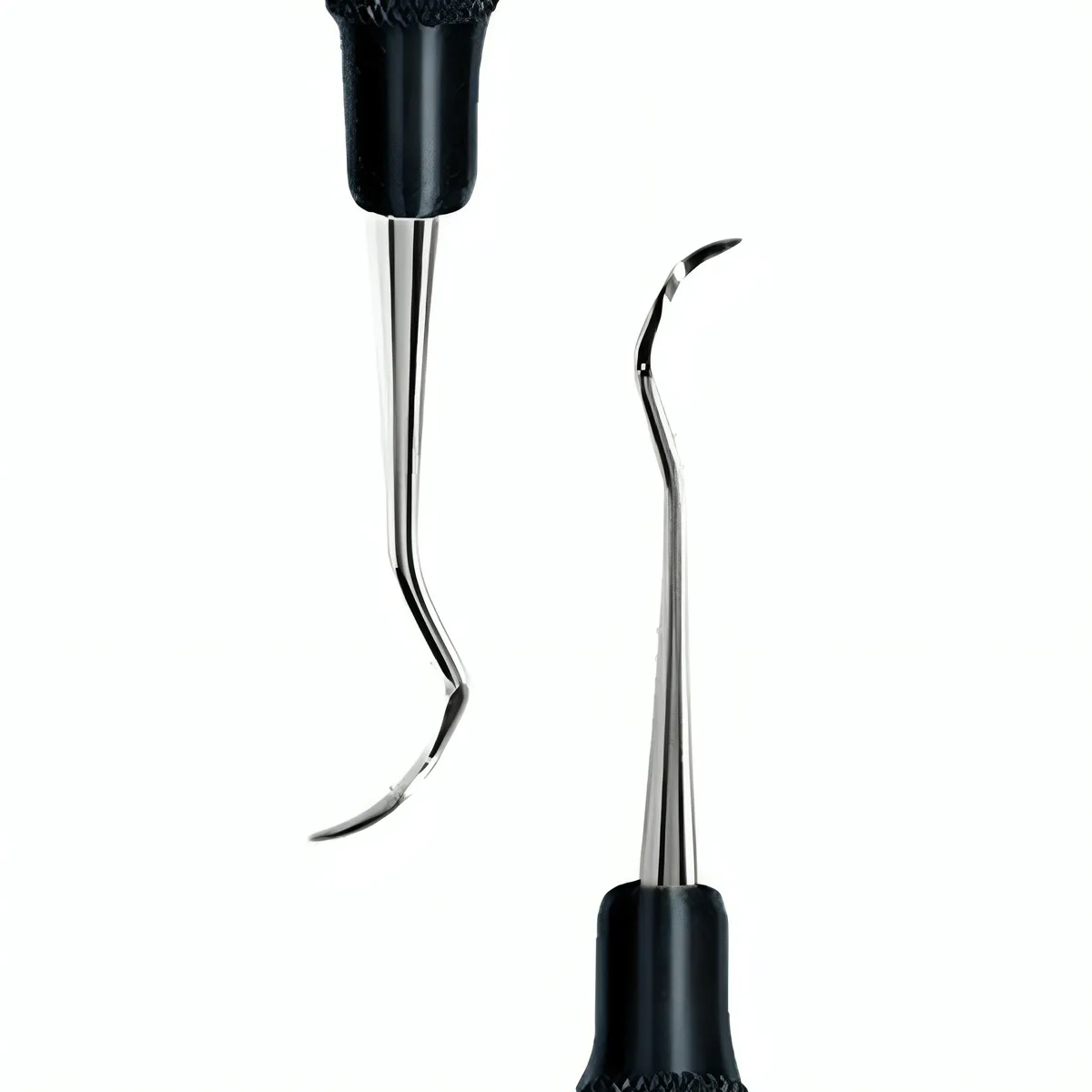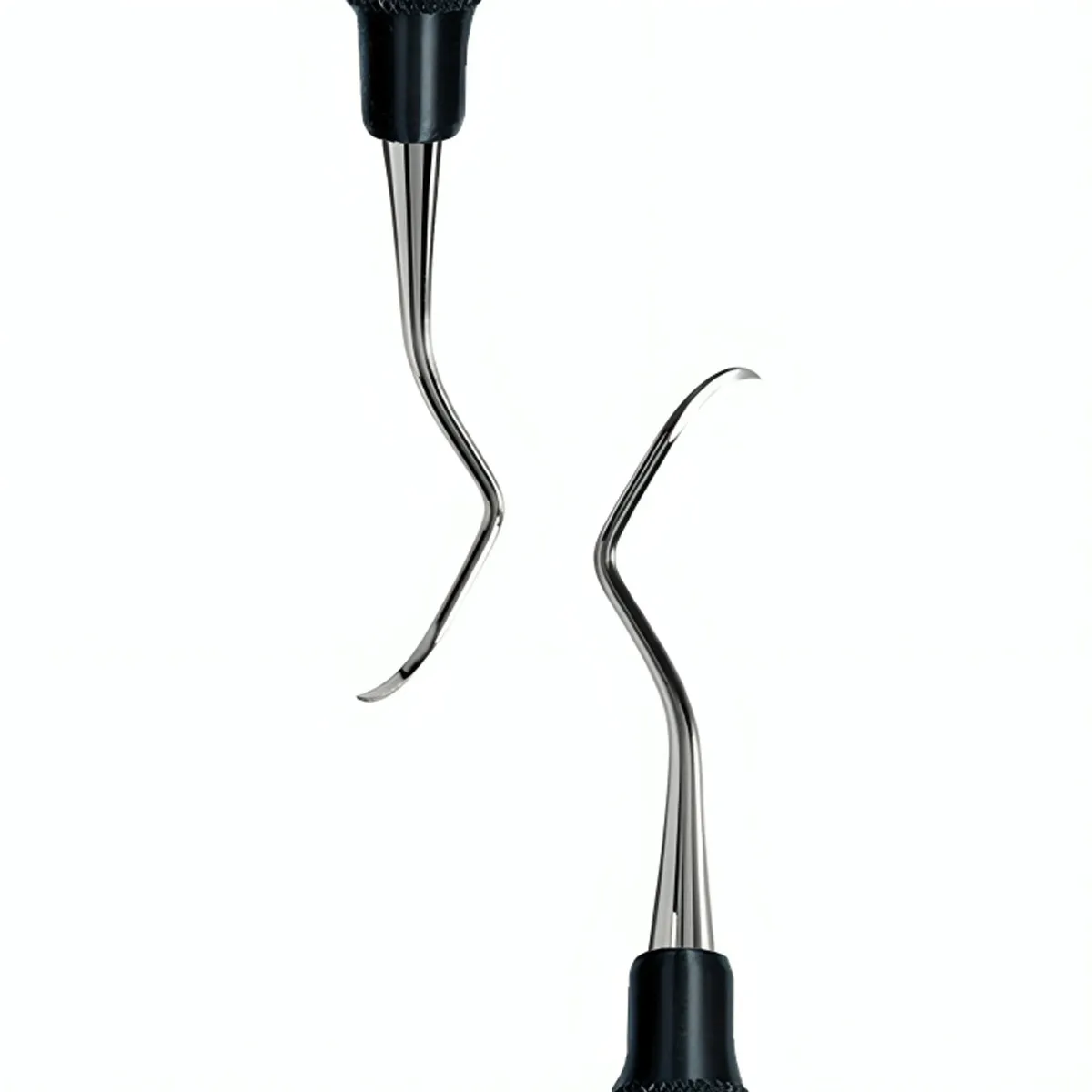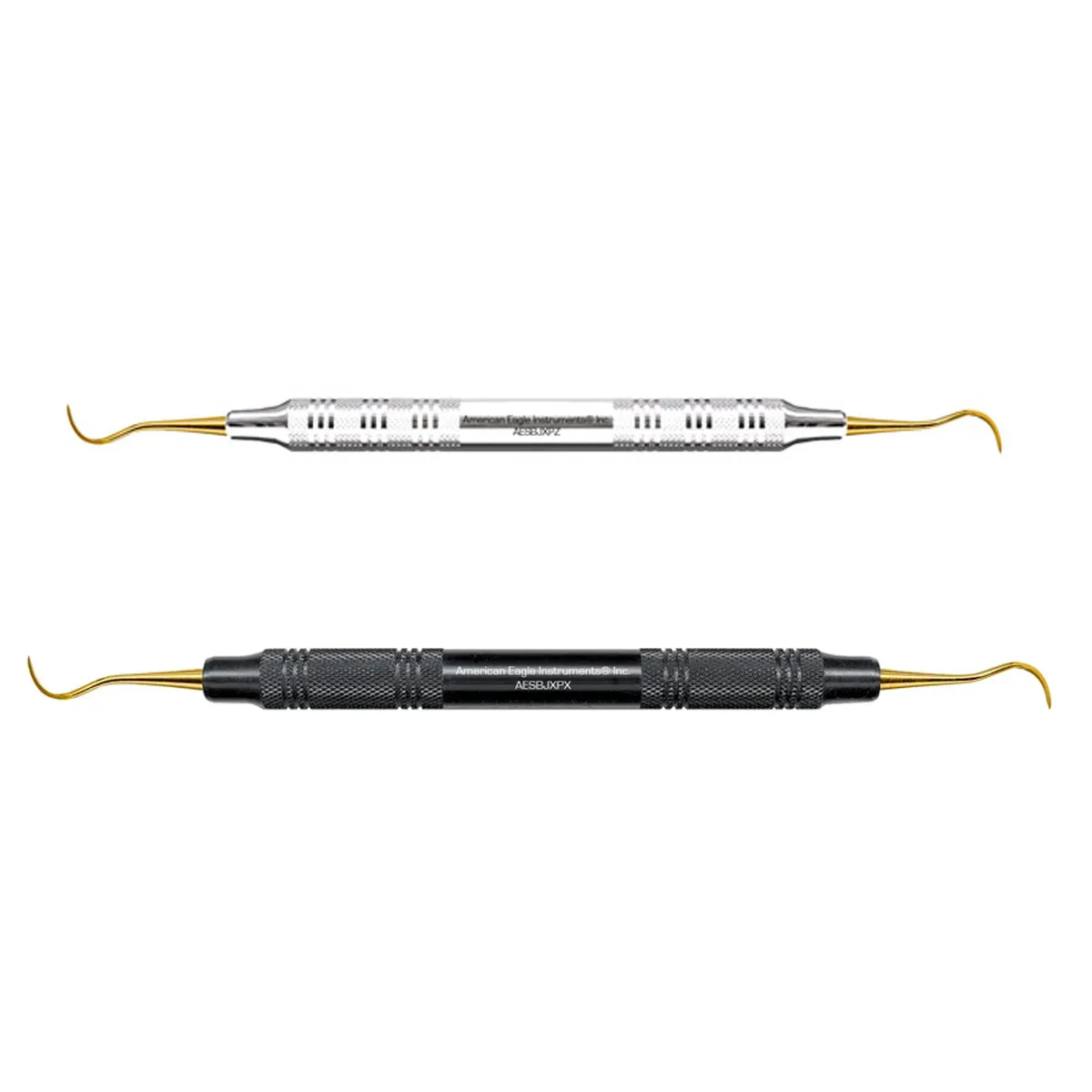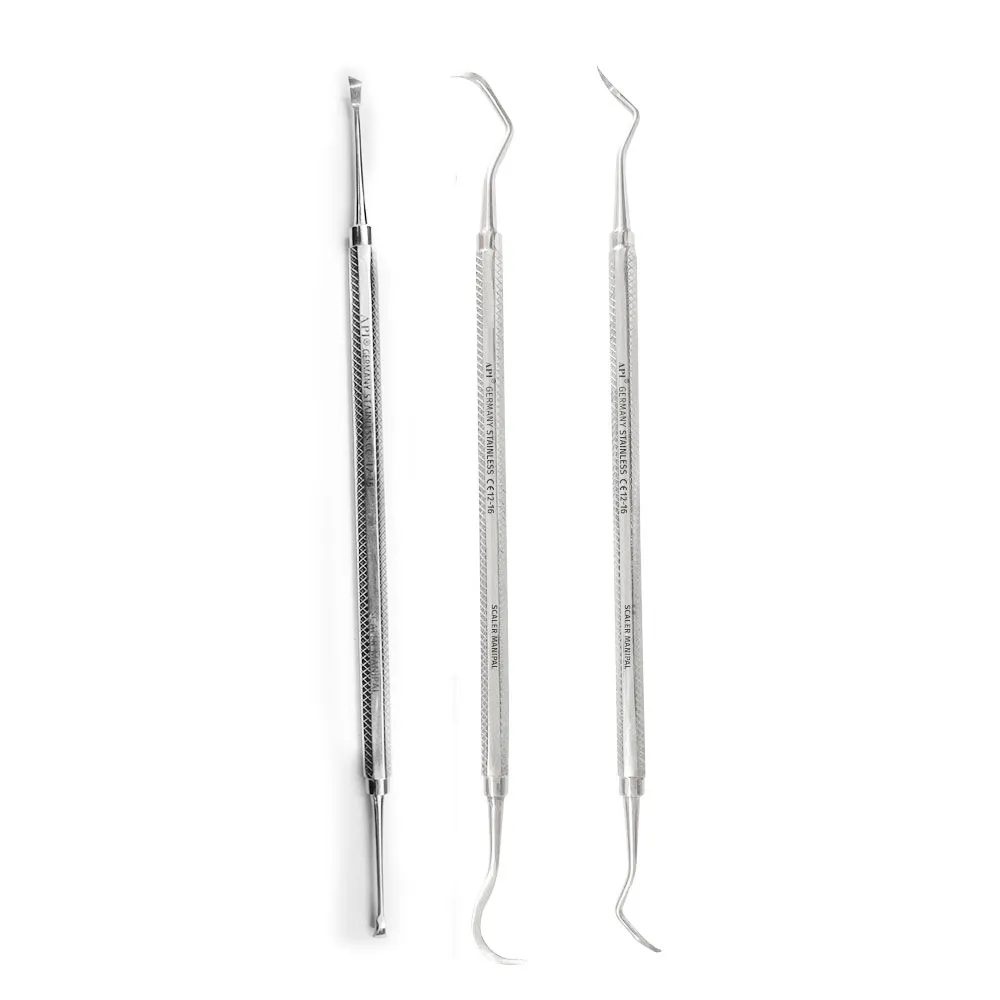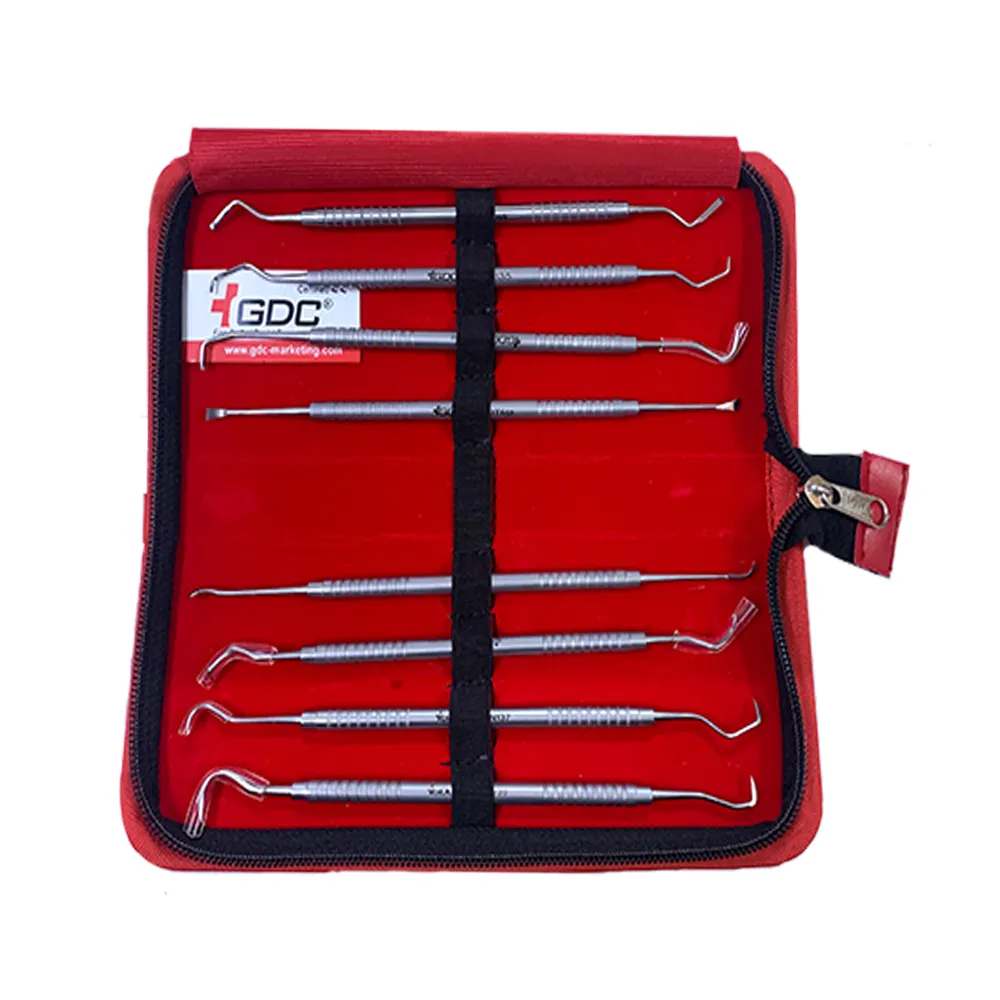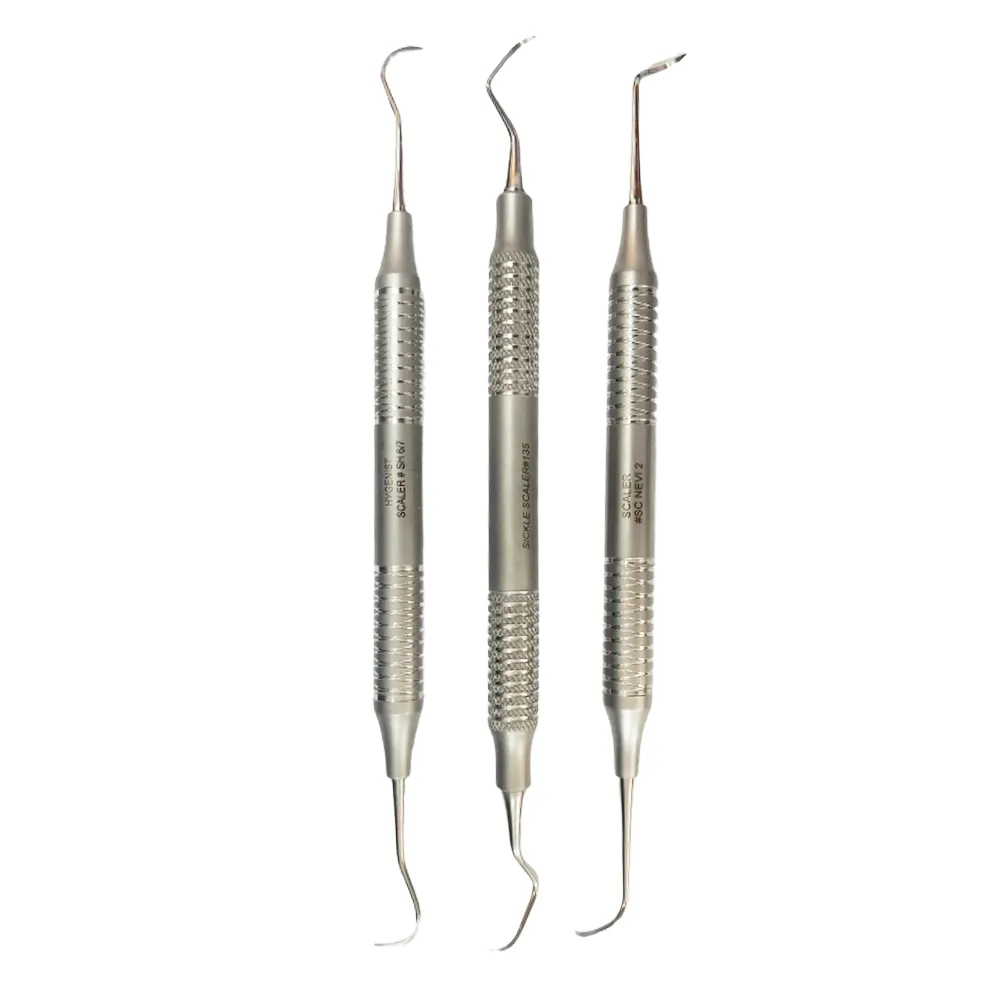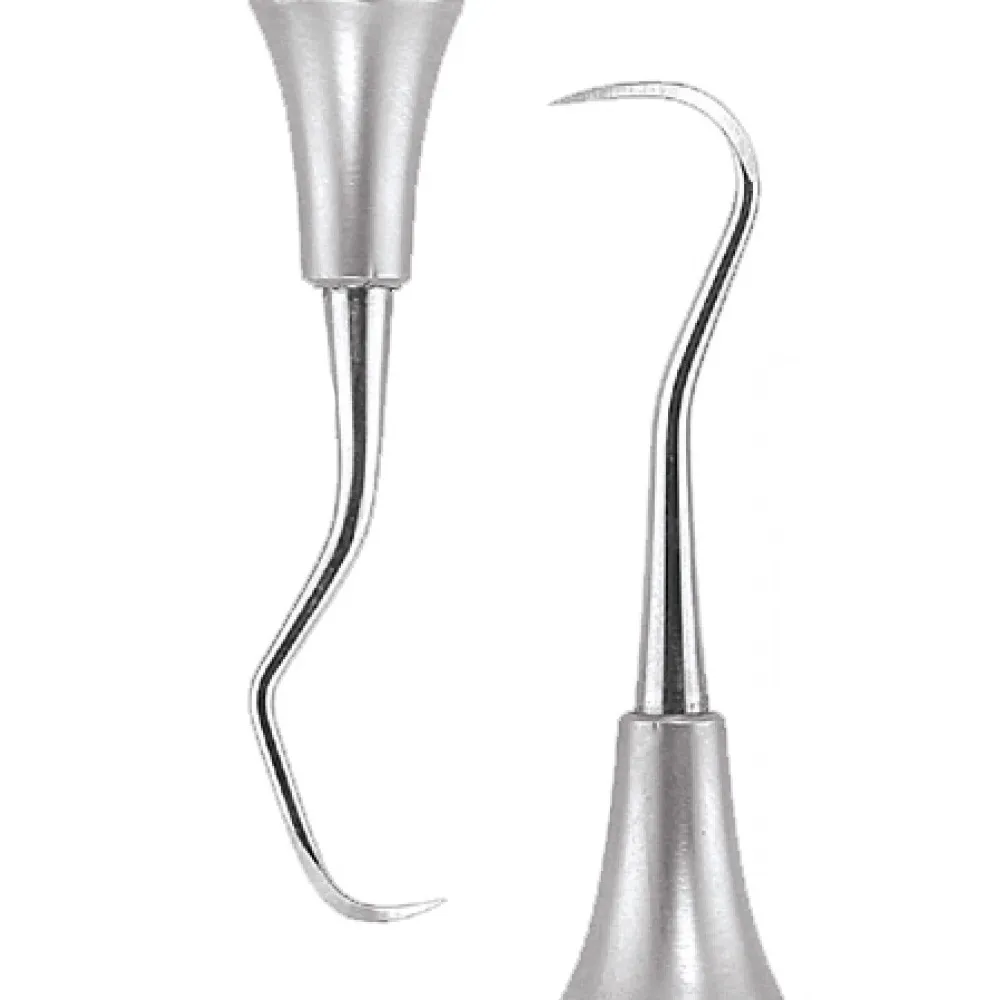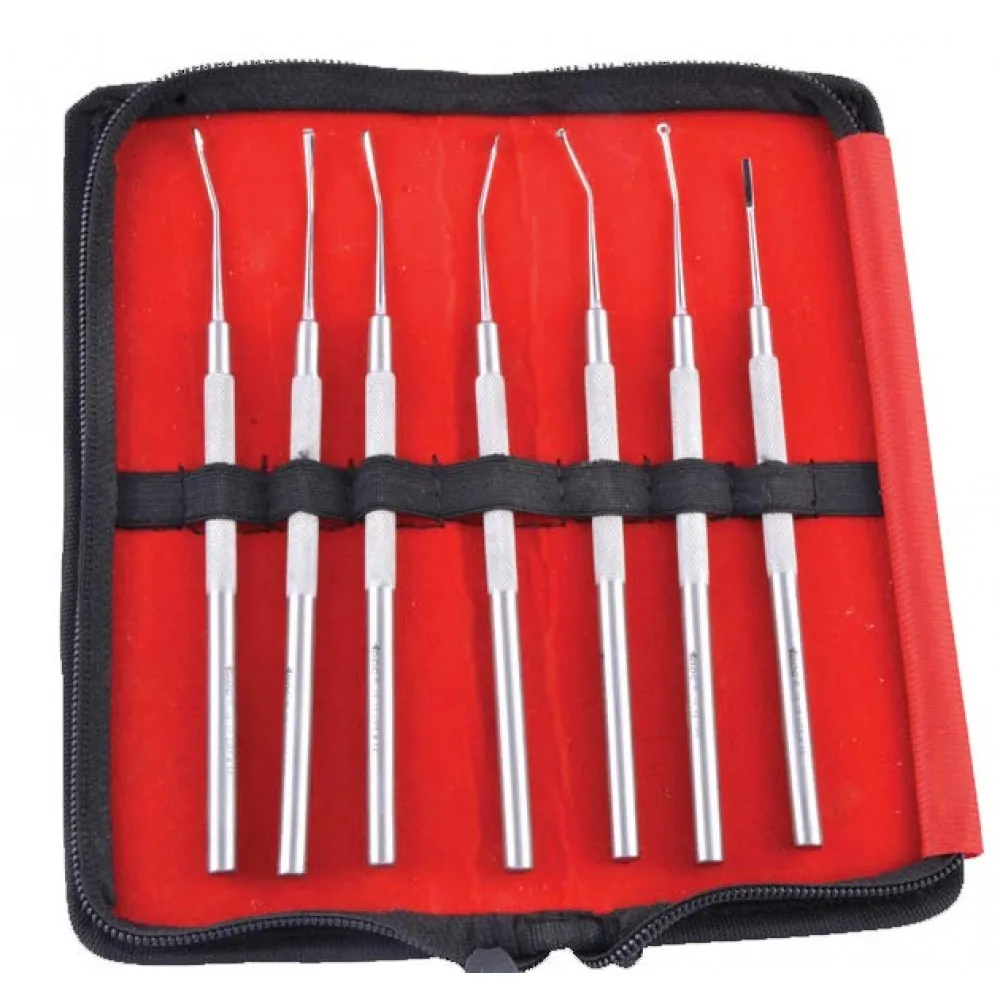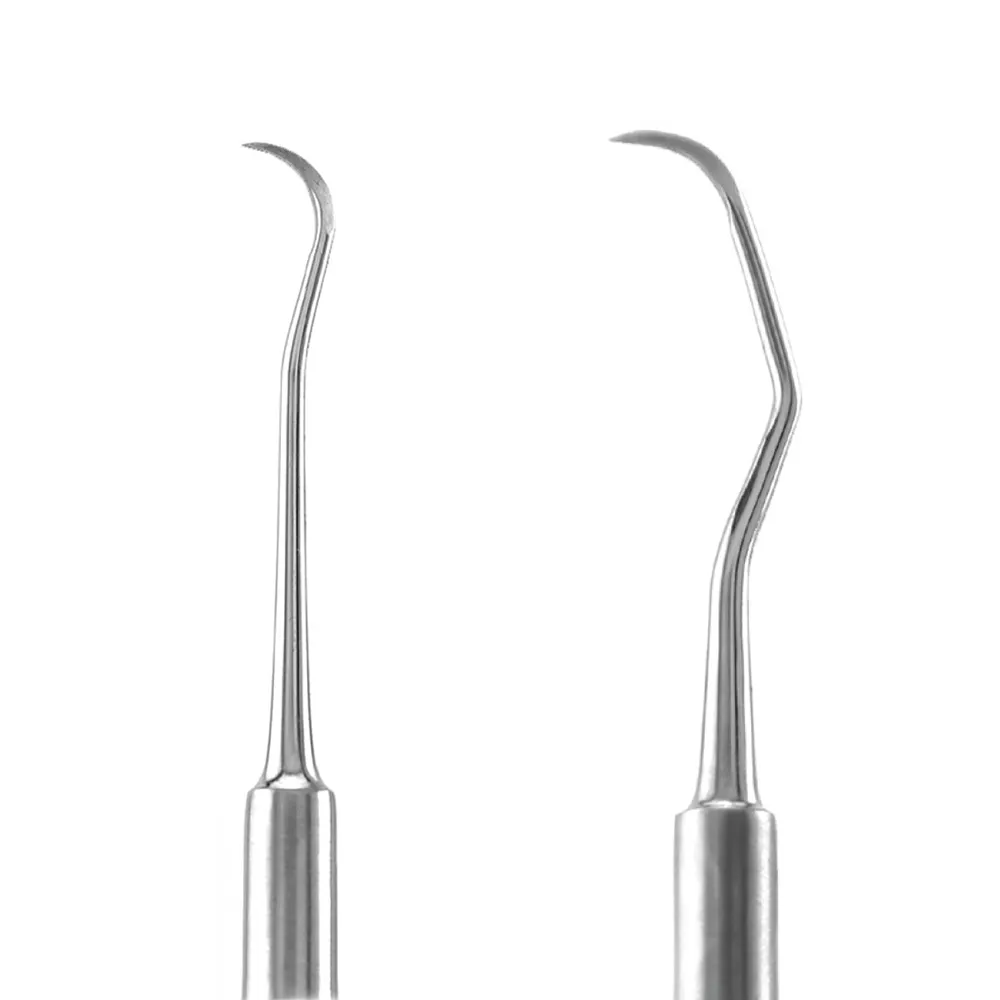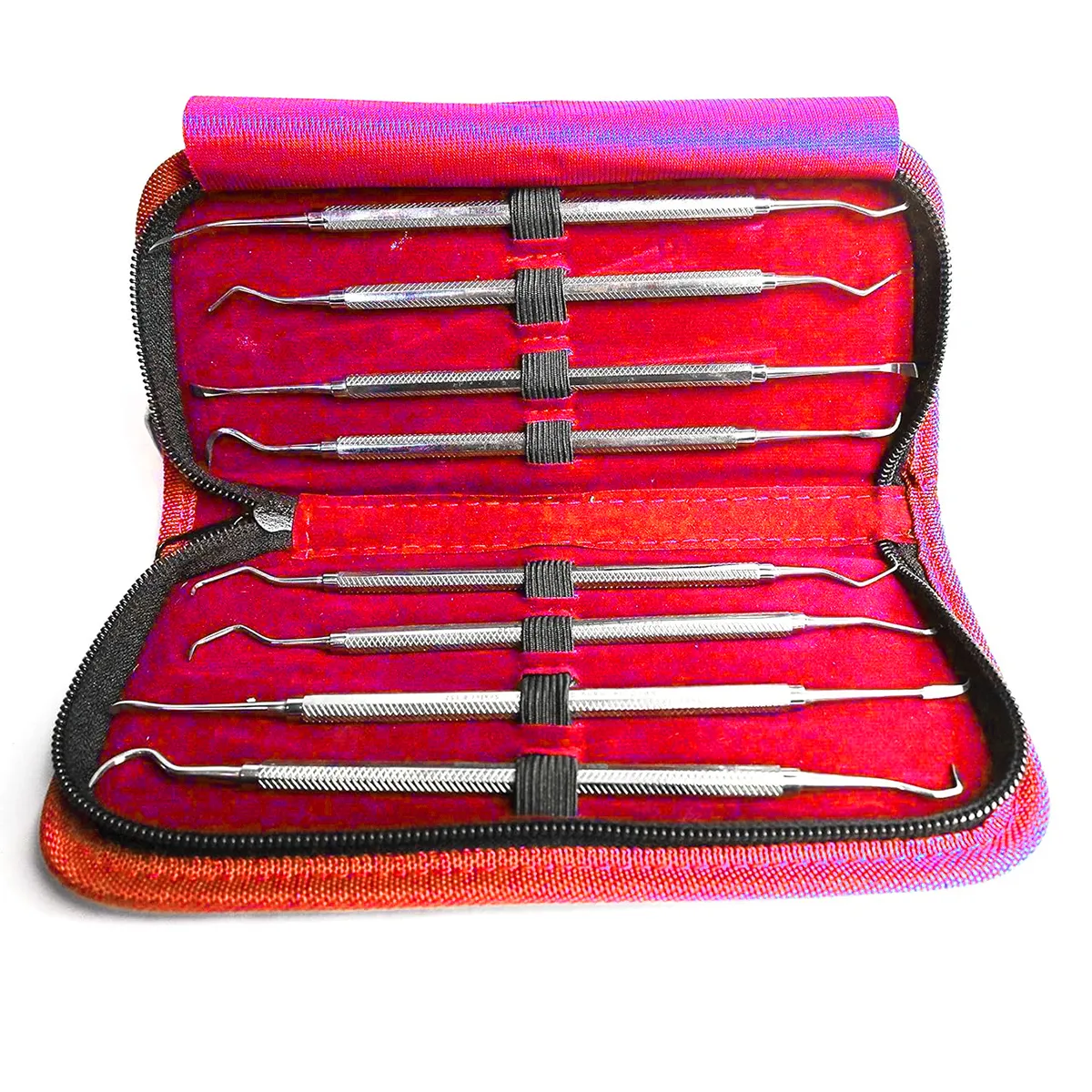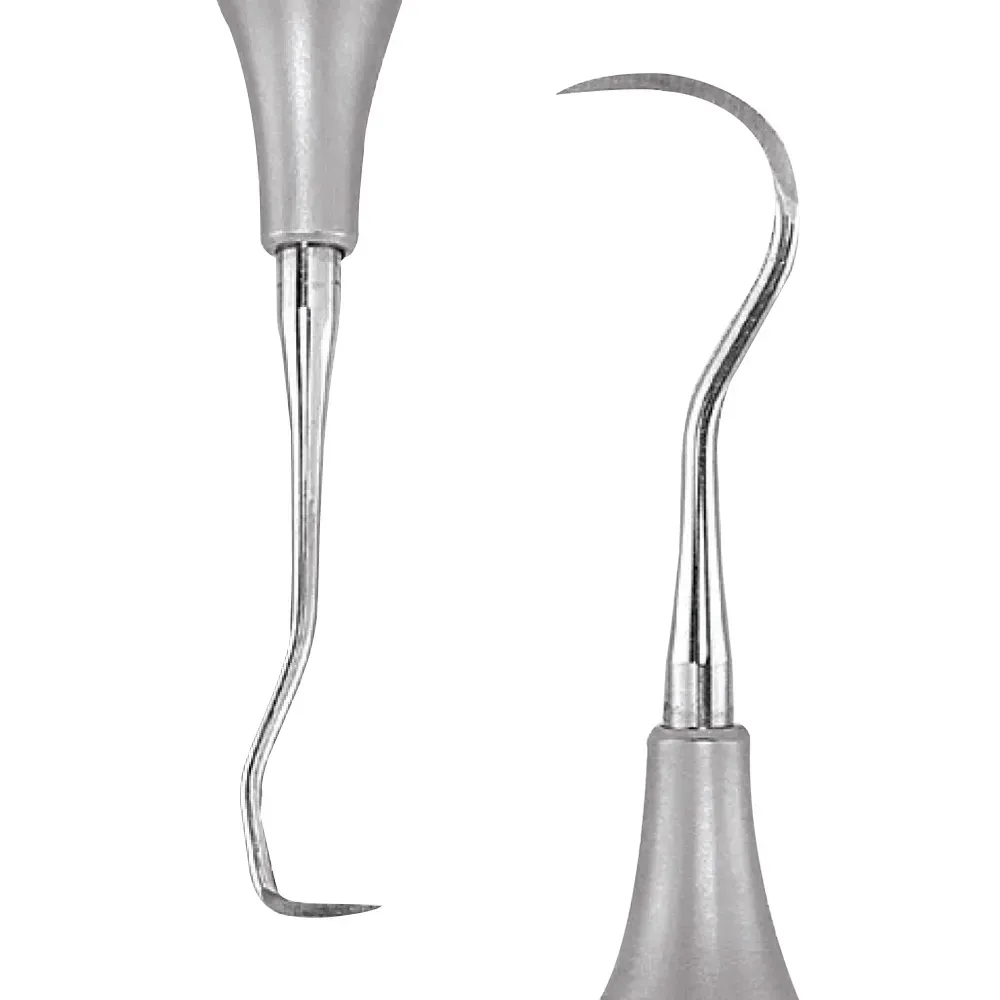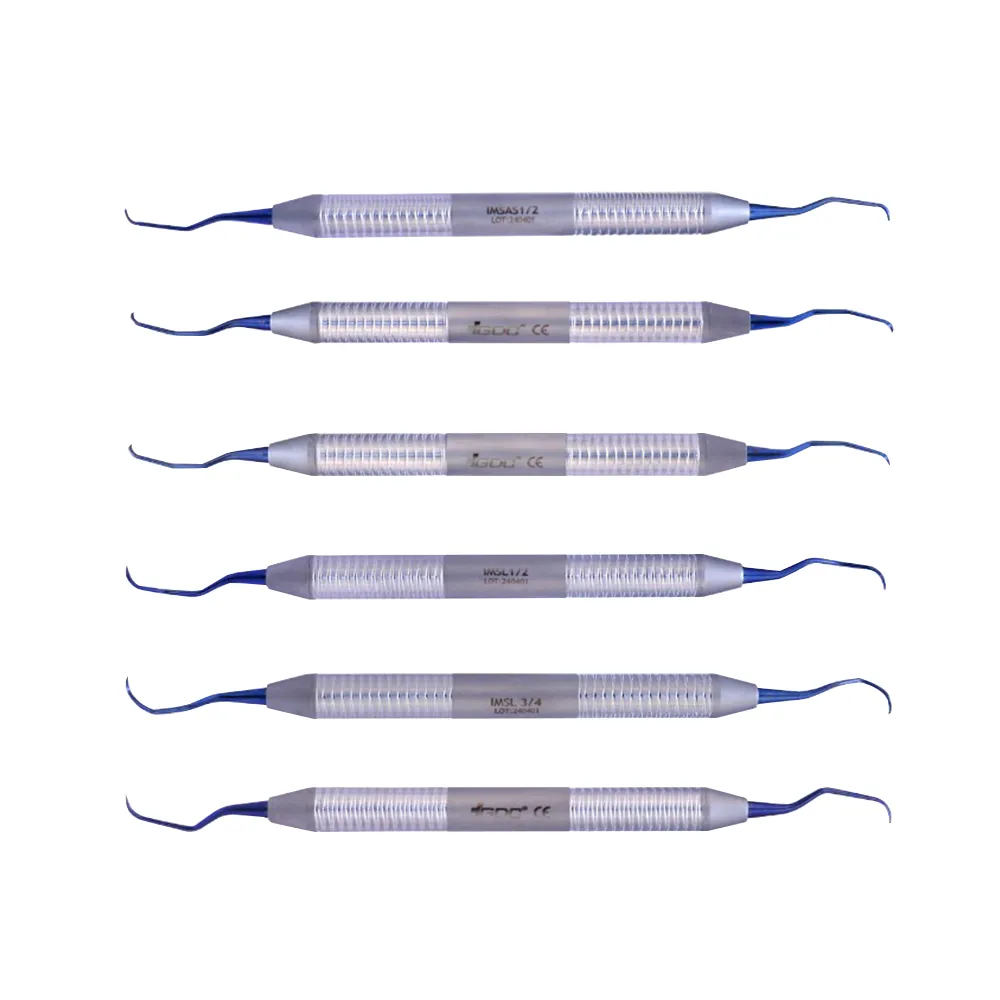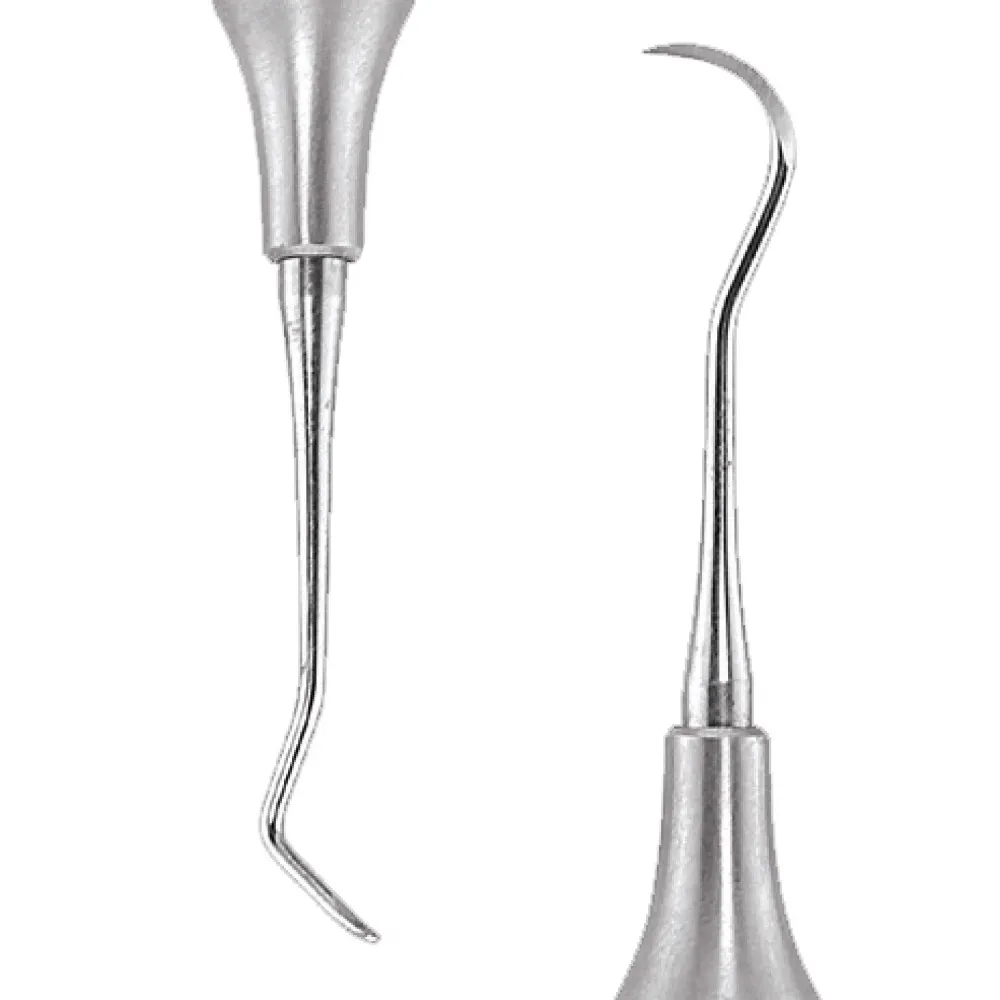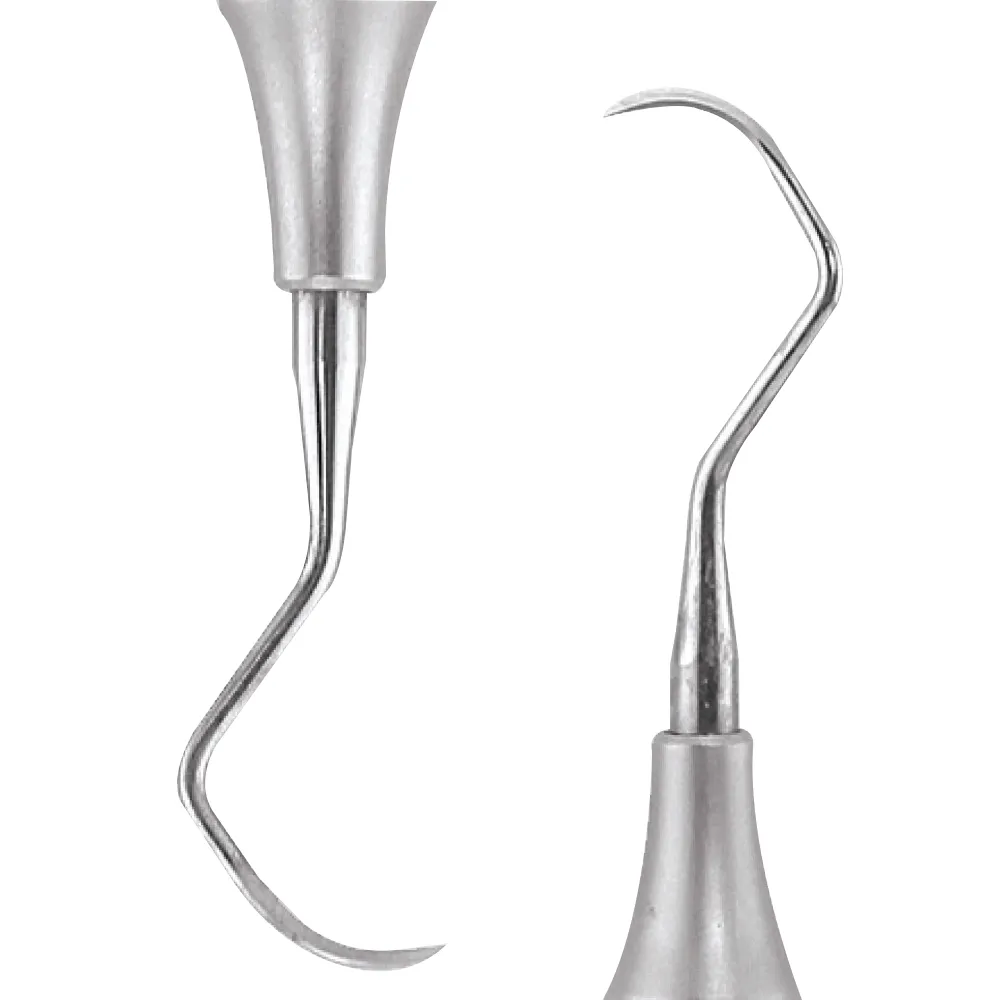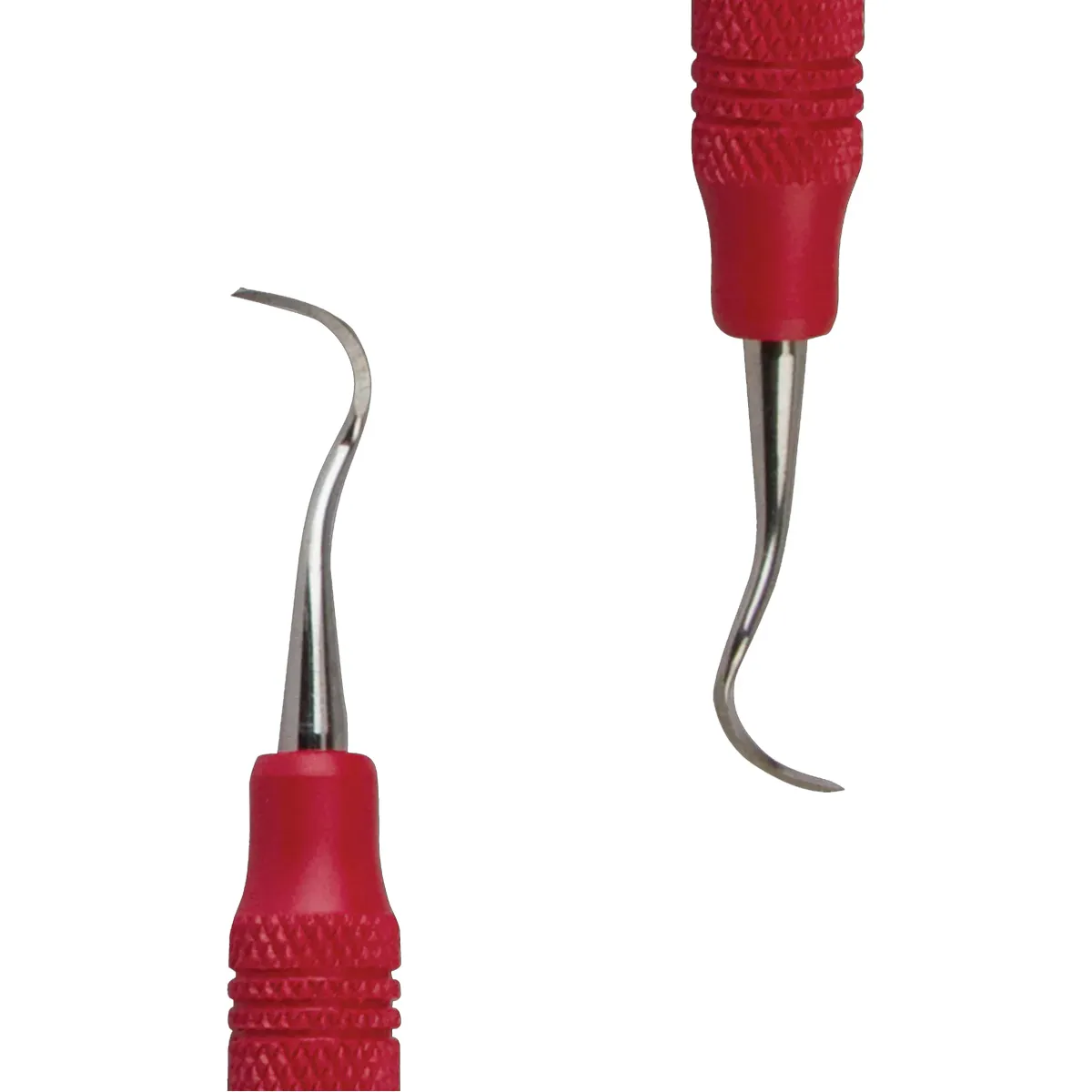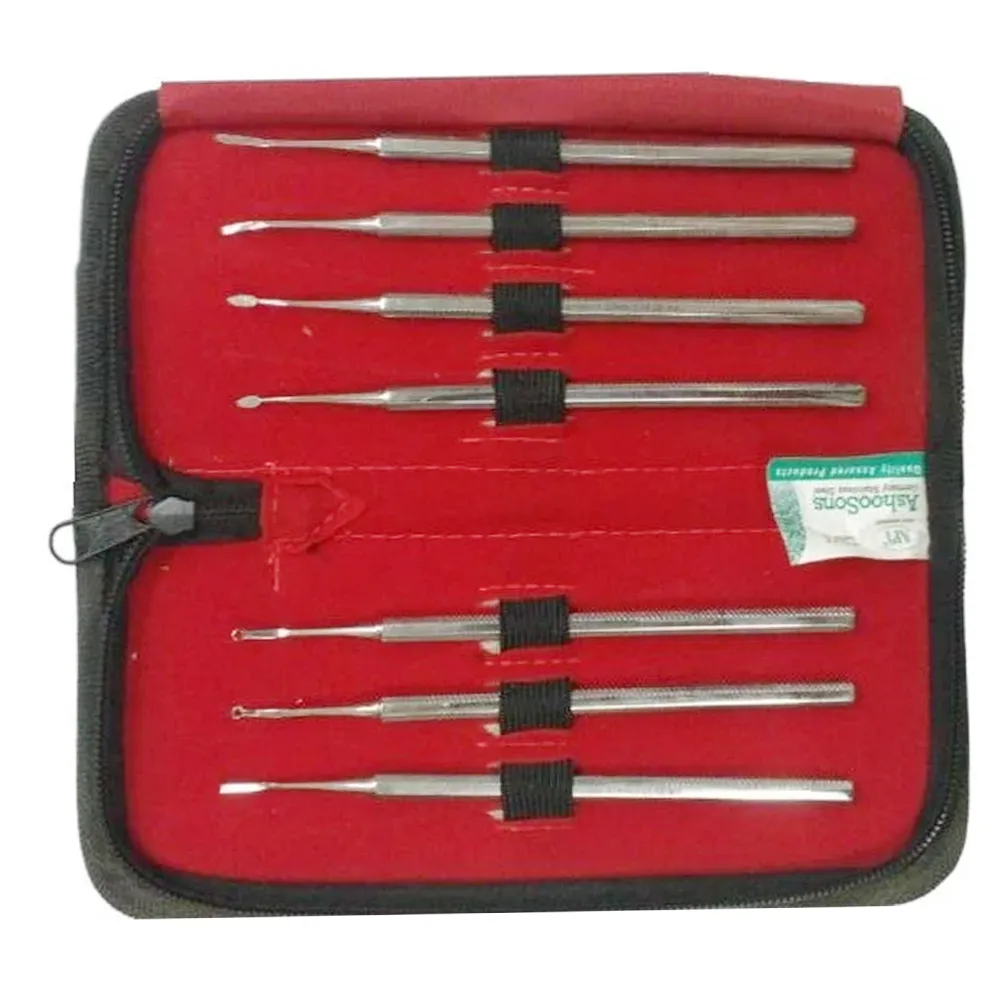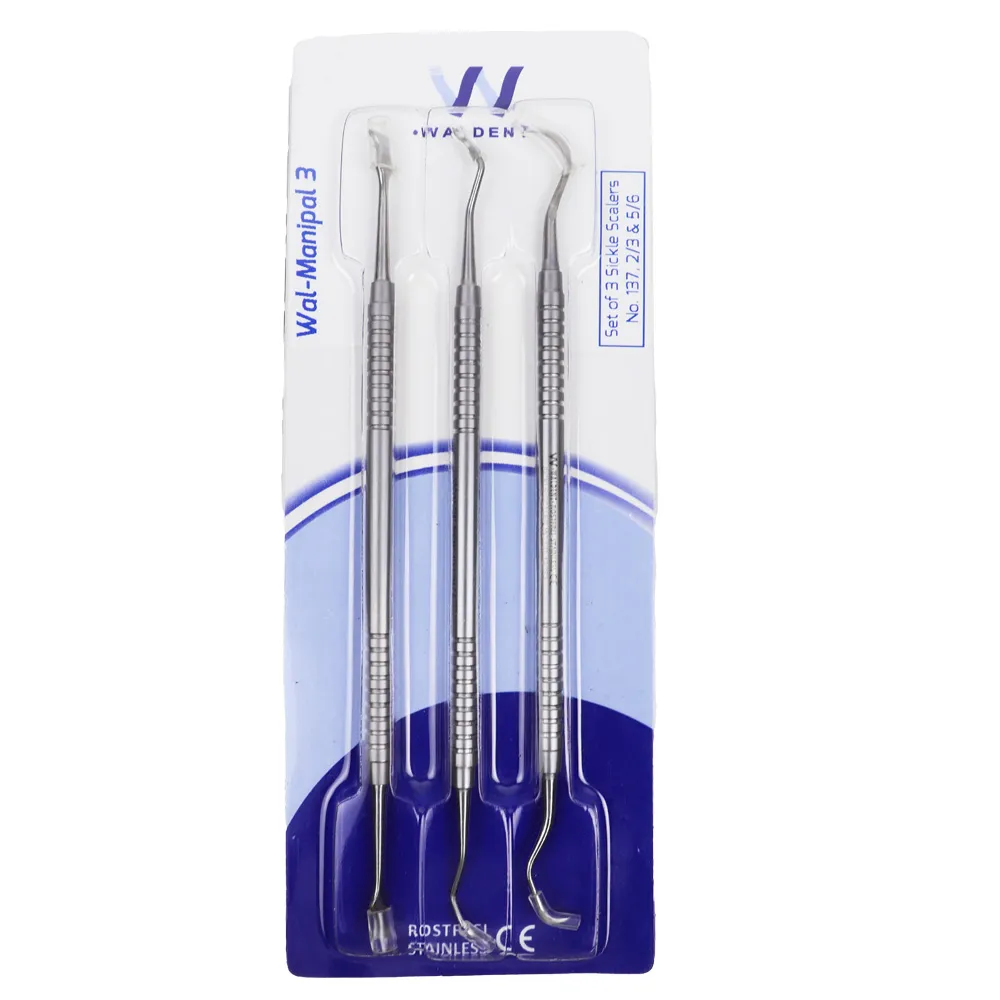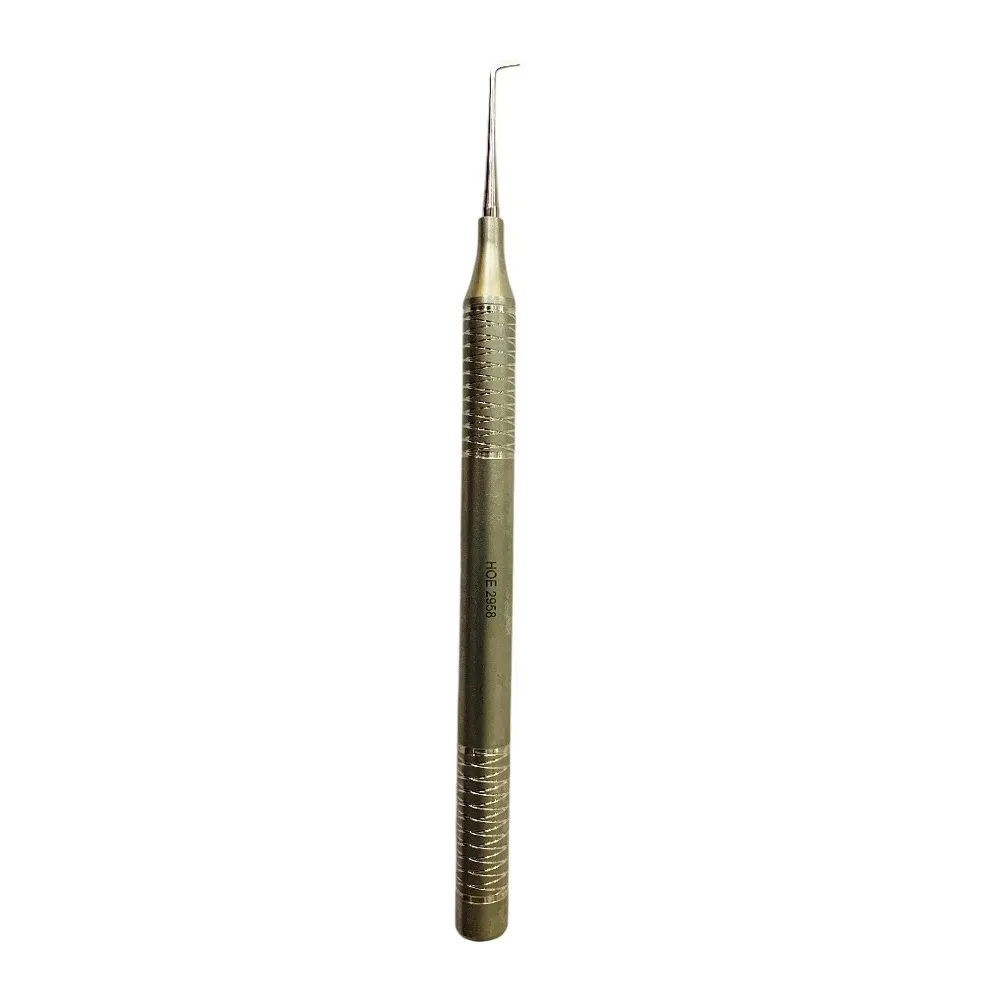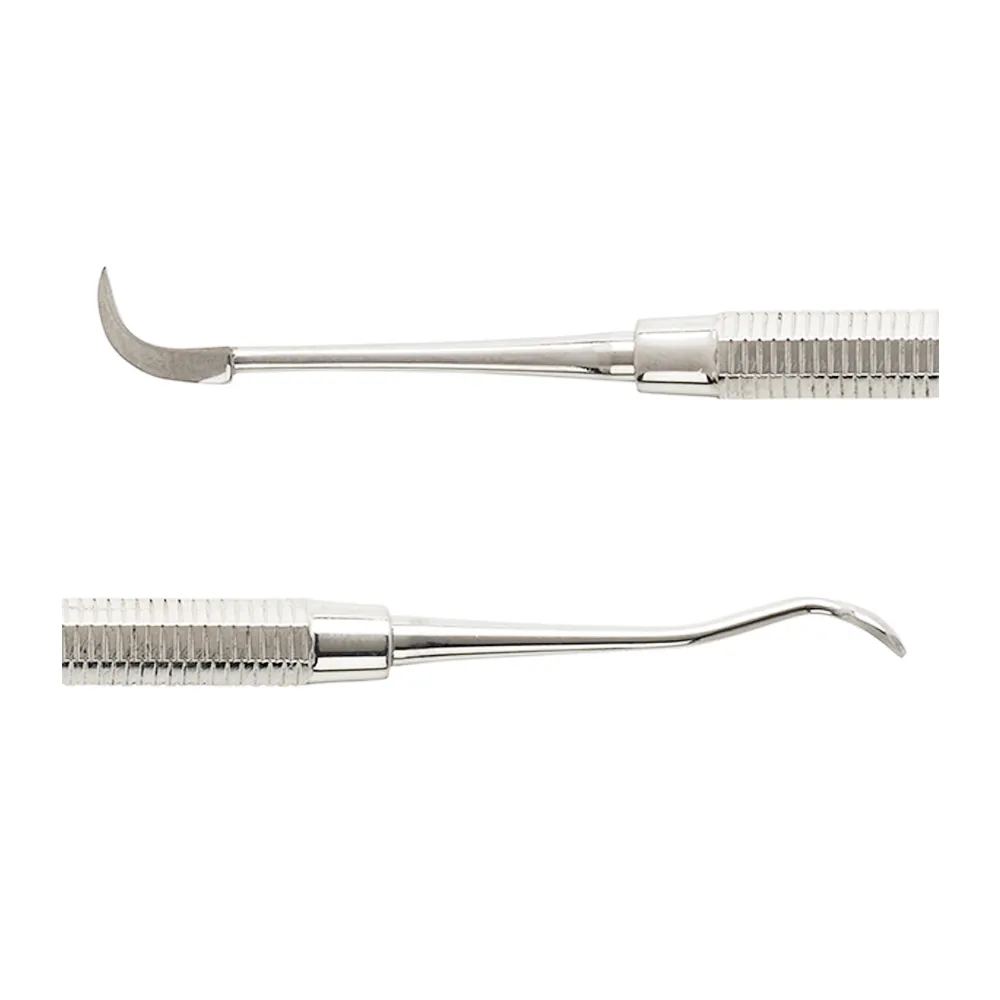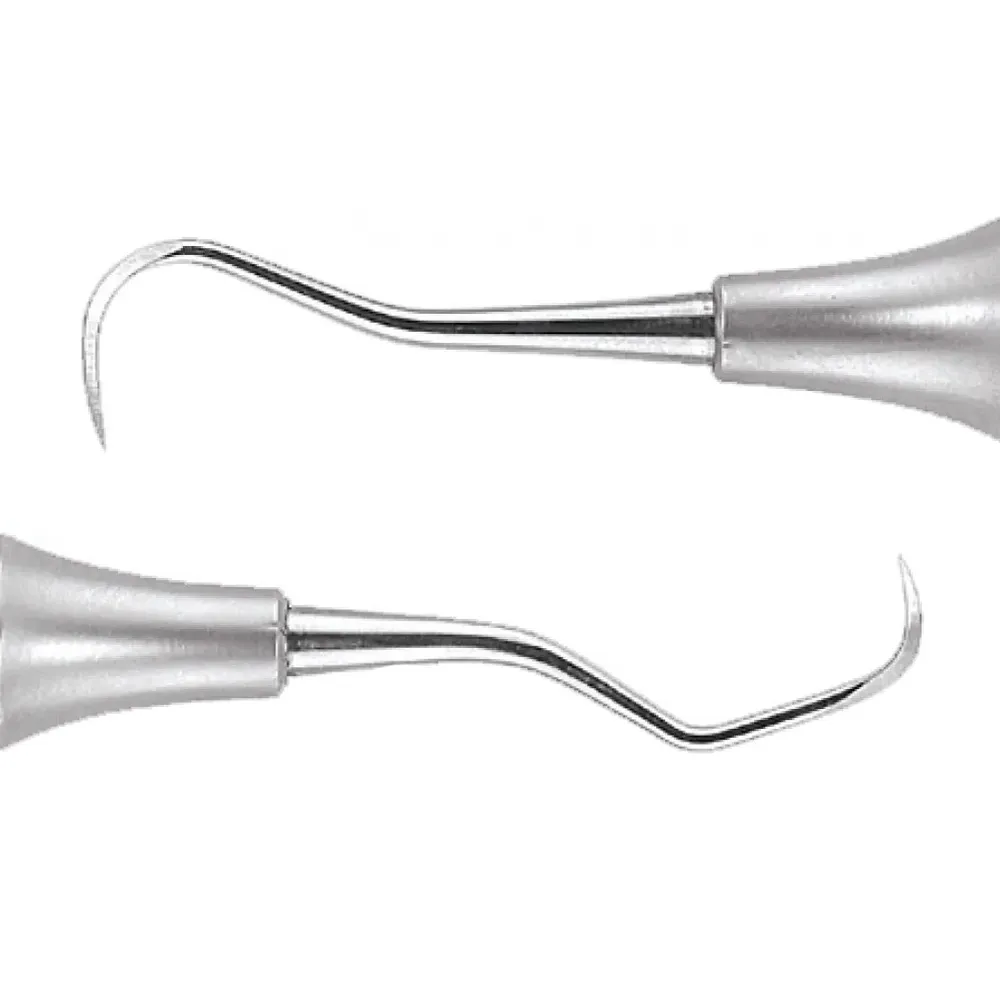Hand scalers are essential instruments in the field of dentistry, playing a crucial role in maintaining oral hygiene. They are primarily used for the removal of dental plaque and calculus (tartar) from tooth surfaces, particularly in areas that are difficult to reach with regular brushing and flossing. These tools are indispensable for dental professionals and are also valuable for patients who are keen on maintaining their dental health between professional cleanings.
Importance of Hand Scalers in Dentistry
Hand scalers are designed to meticulously clean the teeth, helping to prevent gum disease, tooth decay, and other oral health issues. Their precision allows dentists to:
- Remove Plaque and Tartar: Accumulation of plaque and tartar can lead to gum disease and tooth decay. Hand scalers effectively scrape off these deposits from the teeth surfaces, especially around the gum line.
- Prevent Gum Disease: By removing the bacteria-laden plaque, hand scalers help prevent gingivitis and periodontitis, ensuring healthier gums.
- Enhance Oral Hygiene: Regular use of hand scalers can significantly enhance oral hygiene, making it easier to maintain a clean and healthy mouth.
- Facilitate Better Diagnosis: Clean teeth allow dentists to better diagnose other oral issues without the obstruction of plaque or tartar.
Types of Hand Scalers
Hand scalers come in various shapes and sizes, each designed for specific tasks and areas of the mouth. The most common types include:
- Sickle Scalers: These have a curved, sickle-shaped blade and are primarily used for removing supragingival calculus. Their sharp tips and edges make them ideal for scraping off tartar from the tooth surface.
- Curettes: These scalers have a rounded tip, making them suitable for subgingival scaling. They are designed to clean beneath the gum line without causing damage to the surrounding tissues.
- Chisel Scalers: These are used for removing heavy deposits from the proximal surfaces of anterior teeth. They have a straight blade that allows for effective scraping.
- Hoe Scalers: With a hoe-like blade, these scalers are used for removing large deposits of tartar from the flat surfaces of the teeth.
- File Scalers: These have multiple cutting edges and are used for crushing or fragmenting heavy calculus deposits, making them easier to remove with other scalers.
Material and Design
Hand scalers are typically made from high-quality stainless steel, ensuring durability and resistance to corrosion. The handles are designed ergonomically to provide a comfortable grip, allowing for precise control during use. Some scalers come with silicone or resin handles to enhance grip and reduce hand fatigue during prolonged use.
Techniques for Using Hand Scalers
Proper technique is crucial for the effective use of hand scalers. Here are some key points:
- Grasp: Use a modified pen grasp for better control and precision. This involves holding the scaler with the thumb, index, and middle fingers, while the ring finger serves as a support.
- Angulation: The angle between the scaler blade and the tooth surface should be between 45 to 90 degrees. This ensures effective removal of deposits without damaging the tooth or gum tissue.
- Strokes: Use short, controlled strokes to remove deposits. The direction of the stroke should be away from the gum line to prevent injury.
- Adaptation: Ensure that the scaler blade is adapted to the contour of the tooth surface. This increases the efficiency of deposit removal.
Advantages of Hand Scalers
Hand scalers offer several benefits over other dental tools:
- Precision: Hand scalers provide unparalleled precision in removing plaque and tartar, especially in hard-to-reach areas.
- Control: The manual control allows dentists to adjust the pressure and angle, reducing the risk of damaging the tooth or gum.
- Versatility: With different types and designs, hand scalers can be used for a wide range of scaling tasks, both supragingival and subgingival.
- Cost-Effective: Hand scalers are relatively inexpensive compared to ultrasonic scalers and other advanced tools, making them accessible for most dental practices.
Maintaining and Sterilizing Hand Scalers
Proper maintenance and sterilization of hand scalers are crucial to ensure their longevity and to prevent cross-contamination. Here are some tips:
- Cleaning: After each use, hand scalers should be thoroughly cleaned to remove debris and biological material. This can be done using ultrasonic cleaners or manual scrubbing with a brush and cleaning solution.
- Sharpening: Regular sharpening of the blades is essential to maintain their effectiveness. Dull blades can be less efficient and require more force, increasing the risk of injury.
- Sterilization: Hand scalers should be sterilized after each use. Autoclaving is the most effective method, as it uses steam under pressure to kill all microorganisms.
- Inspection: Regularly inspect the scalers for any signs of wear or damage. Replace any instruments that show significant wear to ensure optimal performance.
Choosing the Right Hand Scalers
Selecting the appropriate hand scalers for your practice or personal use depends on several factors:
- Type of Deposit: Consider the type of deposits you need to remove. Heavy calculus may require chisel or hoe scalers, while finer deposits can be managed with sickle scalers or curettes.
- Location: Different scalers are designed for specific areas of the mouth. For instance, curettes are ideal for subgingival areas, while sickle scalers are better for supragingival cleaning.
- Patient Comfort: Ergonomically designed handles and sharp blades can enhance patient comfort by reducing the time and pressure needed for scaling.
- Durability: High-quality stainless steel scalers offer better durability and resistance to wear and corrosion.
Hand Scalers and Patient Education
Educating patients about the importance of hand scalers and their role in oral hygiene can significantly improve compliance and outcomes. Here are some points to emphasize:
- Role in Preventive Care: Explain how hand scalers help in preventing gum disease and tooth decay by removing plaque and tartar.
- Professional Use: Hand scalers are primarily used by dental professionals.
- Technique: Educate patients on the proper technique for using hand scalers at home to avoid injury and ensure effectiveness.
- Regular Dental Visits: Emphasize the importance of regular dental check-ups for professional scaling and to monitor oral health.
Dentalkart: Your One-Stop Shop for Dental Products
At Dentalkart, we understand the importance of having access to high-quality dental products. As a leading e-commerce platform for dentistry-related items, we offer an extensive range of products to meet the needs of dental professionals and patients alike. From hand scalers to advanced dental equipment, our comprehensive catalog ensures you find everything you need to maintain optimal oral health.
Why Choose Dentalkart?
- Wide Selection: Our vast inventory includes hand scalers, dental instruments, consumables, and more, sourced from top manufacturers worldwide.
- Quality Assurance: We prioritize quality, ensuring that all our products meet stringent standards for safety and efficacy.
- Competitive Pricing: Our competitive pricing and regular discounts make it easy for you to access premium dental products without breaking the bank.
- Convenient Shopping: Our user-friendly website and efficient delivery service ensure a seamless shopping experience from start to finish.
- Expert Support: Our knowledgeable customer support team is always available to assist you with any queries or concerns.
FAQs About Hand Scalers
Q: What are hand scalers used for?
A: Hand scalers are used to remove dental plaque and tartar from tooth surfaces, particularly around the gum line and in hard-to-reach areas.
Q: Are hand scalers safe to use at home?
A: No, hand scalers are primarily used by dental professionals.
Q: How often should hand scalers be sterilized?
A: Hand scalers should be sterilized after each use to prevent cross-contamination and ensure they remain hygienic and effective.
Q: Can hand scalers be used on all teeth?
A: Yes, different types of hand scalers are designed for use on various teeth and areas of the mouth, both above and below the gum line.
Q: How can I maintain my hand scalers?
A: Regular cleaning, sharpening, and inspection are essential for maintaining hand scalers. Ensure they are sterilized after each use and replace any instruments that show signs of wear.
Conclusion
Hand scalers are indispensable tools in the field of dentistry, essential for maintaining optimal oral health. Their precision, versatility, and cost-effectiveness make them a staple in dental practices worldwide. By understanding their types, proper usage, and maintenance, both dental professionals and patients can ensure healthier teeth and gums.
At Dentalkart, we offer a wide range of high-quality hand scalers to meet all your dental needs. Explore our collection today to find the perfect tools for your practice or personal use, and take a step towards better oral health.
















